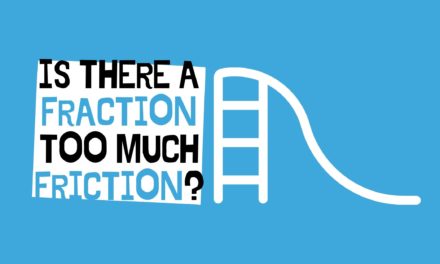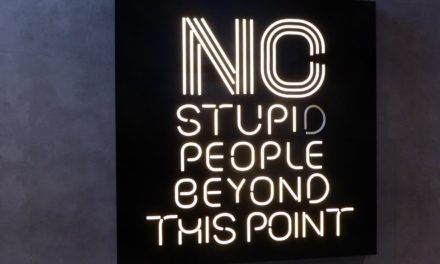Great question today:
Let’s talk follow up emails. You’ve received an enquiry, or worse, have met with a couple. You’ve sent them an email back, but it’s crickets from their end. How do you word your emails to try and elicit a response from them? I don’t want to rush them, but at the same time I’ve got a business to run.
This is an open/shut case whilst also being a deep cave you can get lost in.
My first point of action is to understand that when people hit your inbox they’re at a number of different stages, here’s a few examples:
- They think they might be married one day so they’re dreaming of a wedding.
- They think they’re getting engaged this weekend and they’re keen to start planning.
- They just got engaged and have no idea what a wedding even costs.
- They just found out that you exist and would really like you at their wedding as long as you only cost $50.
- They’re getting married in four years.
- They’re getting married in four weeks.
What a mixed bag of humans enquiring with you, and often you don’t even know what stage they’re at so your replies have to have that personal edge whilst also addressing people in all of these categories.
Now that we know that anyone from the dreamer to the rusher is emailing you with an enquiry, they all need to know the same thing from you:
- Can you do what they need you to do?
- At a date and place they need you to do it at?
- At a price that they are willing to pay,
- For an exchange of your value and life that has been accurately and romantically communicated.
And here’s where people get stuck. If any one of those points aren’t met, they don’t always know what to do. It might be that they don’t know hat kind of celebrant they are going to hire so they’ve emailed 50 of us. Or they might find out you’re not available but they really want you so they need to make other plans.
It’s just a hot mess of
- people like you doing your job,
- people that almost never plan events, planning an event, and
- both of you trying to figure out if you both hold the same amount of value for what you say you do.
How to get a reply
The easiest way to get a reply, is to write a good email. Good emails get replies. Unless the people are terrible people then you probably don’t want a reply from them anyway.
Also, you’ve got to remember that when they ask “how much?” they don’t often enquire with celebrants and so they don’t know how to be polite and nice about it.
What does a good email look like?
A good email, particularly in these early days of our relationship looks like this:
- brief and to the point,
- whilst offering answers to all questions asked, and
- communicating the value you’re willing to exchange for a price you’ve communicated, with one final banger:
- a call to action.
End the short yet powerful email with a call to action.
Not a call to some kind of response like “let me know if that’s ok”
Give them a reason to hit reply. Here’s a few examples:
- If you would like me to hold this date for you, hit reply and I’ll let you know how to proceed.
- The next step for us is to meet either in person, on the phone, or on Skype, I’m available on Wednesday at 6pm, does that time work for you?
- My quote for your wedding is $100,000. That price is valid for the next 5 days, please reply and let me know that you would like to proceed at that price.
- If you read this far and still care, reply and let me know that I’m a valid person and my mum loves me.
- You might understand that I receive many emails like yours each day so if you’d like to talk about me being your celebrant, please reply and we’ll proceed with booking in your wedding.
Or words to that effect.
What about meetings?
I end my meetings the same way. “When you both have made the decision about me being your celebrant, please email me and I’ll send you a booking form”.
People are stupid
People are stupid, well most people are stupid, clearly not you because you’re a member of the Celebrant Institute, but many people don’t know what to do next – so you need to lay the path forward for them, that’s what a call to action is.







I figure that people who receive an email from me (which I can tell if they’ve opened because I have an email tagging program called Bananatag that sends me an email when they open it) AND DON’T RESPOND fall into two camps:
1. I’m too expensive/don’t provide the service they’re looking for/whatever
2. They think I sound perfect for their day, but they get distracted and forget to respond.
For every email I send that I don’t receive a response to, I send one follow up about three days after the orginal email. It simply says “hey X, thanks again for getting in touch, just following up to see if you still wanted to sit down for a chat about your wedding on Y.”
Those people who fall into the first camp will just ignore the follow up, and that’s totally fine. It’s for the people who fall into the second camp that I really send the email; the ones who thought I sounded awesome in my original email but have gotten distracted and forgotten to follow up.
Invariably I get a response from those in the second group saying “oh thanks so much, we really want to meet you but got distracted. Let’s set a date for a meeting!”
If I don’t hear back from them, the lead goes stale and is closed in a week, and I just don’t think about it again. I have had the odd occasion when I’ve heard back from them MONTHS later, because they were one of those people that Josh was talking about who were emailing suppliers way ahead of their wedding.
I’ve had too many times when someone has not responded to a first email but has responded to a follow up to stop sending those follow up emails. They’re worthwhile (and they’re automated through my CRM, Tave).
However I’m not interested in following up more than once. If they’re not interested in my service (i.e. the first group), more than one follow up will seriously piss them off and they might start telling their friends about the annoying celebrant who wouldn’t leave them alone. If they are interested, but they can’t remember to respond after two emails, quite frankly they’re going to test my patience through the entire process and I’d prefer not to book them.